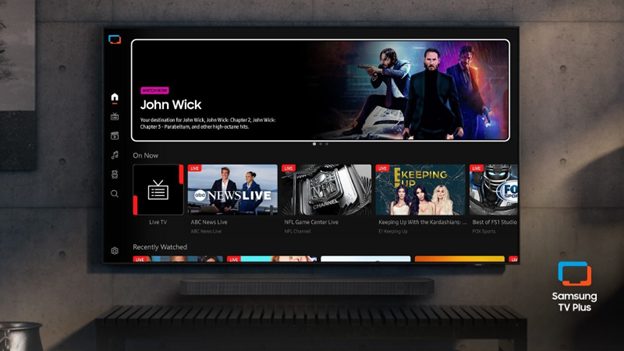
Fans watching watching Super Bowl via a streaming service experienced the action nearly one minute later than those watching the game at SoFi Stadium, according to data from Phenix, a developer of real-time streaming technology. In light of the fact that nearly half of all viewers were expected to watch the game over the internet, the data suggests that the latency was worse than what previous research has shown and the challenge facing streaming services when broadcasting live marquee sporting events that attract larger than normal audiences.

As many (older) viewers are aware, the best way to ensure that they’re watching the Super Bowl at the lowest latency is via over-the-air broadcasts. Watching over cable or satellite is the next best option, however since an ever-increasing number of viewers are now watching the game via streaming, this creates more lagtime (aka latency), meaning viewers watching over different platforms are seeing live action at different intervals.
Unfortunately the increase in viewing the Super Bowl over the internet has also coincided with the explosion in sports betting, creating issues for up-to-the minute wagering.
According to Streamable, which conducted its own research prior to the game, NBC’s Peacock streaming service (which broadcast Super Bowl LVI) had the highest lagtime at 44 seconds, a full 20 seconds slower than NBC’s Sports App. In its report, Streamable said that the best option for viewers wanting to avoid latency would be via vMVPDs, such as YouTube TV (which came in the fastest at just 16.5 seconds latency), Hulu or Sling.
These numbers reflect the lag time when compared to Verizon's 5G "Super Stadium" service available at SoFi Stadium.
Last year the average lag time was 44 seconds, with YouTube TV (again) with the lowest latency at 42.2 seconds, followed by CBS Sports with 43 seconds, Yahoo Sports with 43.1 seconds, fuboTV with 44.8 seconds, NFL with 44.9 seconds and Hulu + Live TV with 46.2 seconds. In 2020, the average lag time was 44-55 seconds average.
The data from Super Bowl LVI was illustrative of the problems facing streaming services that show live sports in the age of betting over the internet. And considering that the data was slower than normal despite the fact that NBC did not stream the game in 4K this year suggests that streaming the game in UHD will create more challenges in the years ahead.
The professional video industry's #1 source for news, trends and product and tech information. Sign up below.
Phenix CEO Roy Reichbach, whose company specializes in technology to help streaming companies reduce lagtime, scolded the services for not paying enough attention to latency problems.
"Enough is enough! If you are charging users for streaming capabilities, provide an actual real-time stream that every fan can experience at the same time, regardless of what platform or device they are watching the game on,” he said. “It's time for streaming platforms to step up and fix the latency issues for nationally televised events – the risk to the bottom line is too large to not make it right."
This article has been updated to reflect comparisons to Verizon's 5G stadium service.
Tom has covered the broadcast technology market for the past 25 years, including three years handling member communications for the National Association of Broadcasters followed by a year as editor of Video Technology News and DTV Business executive newsletters for Phillips Publishing. In 1999 he launched digitalbroadcasting.com for internet B2B portal Verticalnet. He is also a charter member of the CTA's Academy of Digital TV Pioneers. Since 2001, he has been editor-in-chief of TV Tech (www.tvtech.com), the leading source of news and information on broadcast and related media technology and is a frequent contributor and moderator to the brand’s Tech Leadership events.

